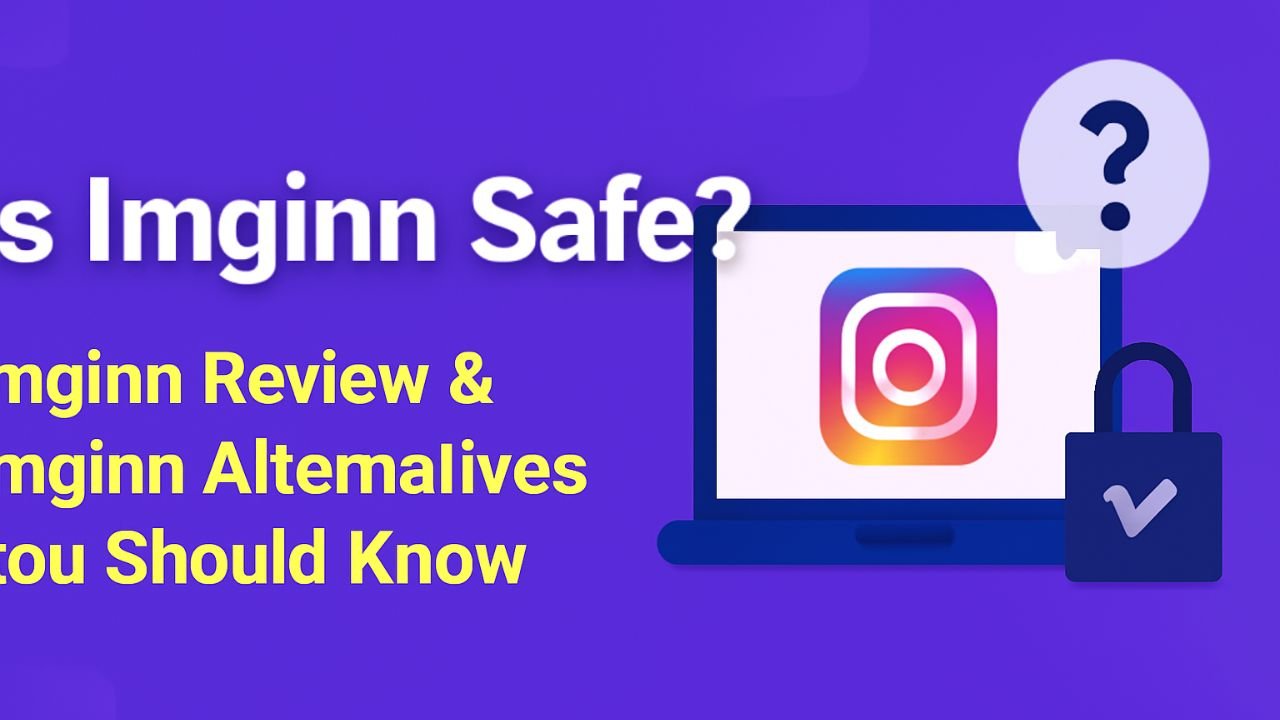Explore the ultimate guide to smart home cameras in 2025. Learn about types, features, top brands, and setup tips to enhance your home security. In today’s world, the need for security has become a top priority. From securing your home to monitoring your family, pets, and valuables, smart home cameras have become an essential tool for many homeowners. Whether you’re just getting started with home automation or upgrading your security system, understanding smart home cameras and how they fit into your home’s ecosystem is crucial.
In this comprehensive guide, we’ll break down everything you need to know about smart home cameras, including the different types, features, setup processes, top brands, and frequently asked questions to help you make an informed purchase. By the end of this guide, you’ll be equipped to make smart decisions about securing your home.
ALSO READ: Understanding TRWHO.com Security: Protecting Your Data Online
What are Smart Home Cameras?
Smart home cameras are wireless, internet-connected devices that offer real-time video surveillance for homes and businesses. These cameras connect to your Wi-Fi and allow you to monitor your property remotely through a smartphone, tablet, or computer. They can record, send alerts, and even integrate with other smart home devices like door locks, lights, and thermostats.
These cameras are an important part of the Internet of Things (IoT), contributing to the increasing interconnectivity of devices within the home. They can be used both indoors and outdoors and are equipped with various features, including motion detection, night vision, cloud storage, and even two-way audio.
Why You Need a Smart Home Camera
Before diving into the different types of smart cameras, let’s take a moment to explore why these devices are a must-have for many homeowners:
- Enhanced Security: The primary benefit of smart cameras is improved security. These cameras act as a deterrent to potential intruders and allow you to monitor suspicious activity in real-time.
- Remote Monitoring: Access footage from anywhere in the world, providing peace of mind when you’re away from home.
- Cost-Effective: Compared to traditional security systems, smart cameras can be a more affordable option with little to no professional monitoring fees.
- Integration with Other Smart Devices: Smart cameras can integrate with other home automation systems, enhancing your overall security setup.
Types of Smart Home Cameras
When shopping for a smart camera, it’s essential to understand the different types available. Each type serves a specific purpose and comes with unique features. Here are the most common categories of smart home cameras:
1. Indoor Smart Cameras
Indoor cameras are designed for use inside your home. They’re generally smaller, discrete, and can be placed on shelves, counters, or mounted on walls. Indoor cameras typically have features like two-way audio, motion detection, and night vision.
Best For:
- Keeping an eye on pets or children
- Monitoring activity inside the home
- Checking for unauthorized entry
2. Outdoor Smart Cameras
Outdoor cameras are weatherproof and built to withstand the elements, including rain, snow, and heat. These cameras typically feature a wider field of view, enhanced night vision, and motion sensors to detect movement from farther away.
Best For:
- Monitoring the exterior of your home
- Detering criminals from approaching your property
- Watching your front door or driveway
3. Doorbell Cameras
Doorbell cameras are a specialized type of smart camera that integrates into your home’s doorbell system. They allow you to see and communicate with visitors remotely, often through a mobile app. Some models include a chime, while others integrate with existing doorbell systems.
Best For:
- Answering the door remotely
- Monitoring packages left at the door
- Enhancing home security with a visible camera at the entrance
4. Wireless vs. Wired Cameras
Smart home cameras can either be wired or wireless, with the main difference being how they connect to the internet and your home’s power supply. Wireless cameras are easy to install and offer more flexibility, while wired cameras often offer more reliable connections.
Best For:
- Wireless: Homeowners who want easy installation without the need for professional wiring.
- Wired: Homeowners looking for a more secure and reliable connection, particularly in areas with weak Wi-Fi signals.
Key Features to Look for in Smart Home Cameras
Smart cameras come with an array of features, and understanding these can help you choose the right one for your needs. Here are some key features to look for:
1. Motion Detection and Alerts
One of the most important features of any smart camera is motion detection. It allows the camera to sense movement and send notifications to your phone when something unusual is detected. Many cameras allow you to set motion zones to reduce false alerts.
2. Two-Way Audio
Two-way audio allows you to communicate with people through the camera. This is useful for answering the door or speaking with family members, even if you’re not home. It’s also helpful for monitoring children or pets.
3. Night Vision
A smart camera with night vision can continue to provide clear video footage even in low-light conditions. This is essential for cameras placed outside or in dimly lit areas like entryways or hallways.
4. Cloud Storage or Local Storage
Smart cameras typically store footage either on the cloud or through local storage, such as an SD card. Cloud storage allows you to access footage remotely, while local storage means your footage stays within your home.
5. Mobile App Integration
Most smart cameras are compatible with mobile apps that allow you to view footage in real-time, receive alerts, and control settings. Ensure that the camera you choose offers an intuitive and user-friendly app.
6. Smart Home Integration
Some cameras can be integrated with other smart home devices, like smart lights, locks, or thermostats. This creates a cohesive smart home system where devices work together seamlessly to enhance security and convenience.
7. Video Resolution
Resolution plays a critical role in how clear the footage is. A higher resolution camera (1080p or better) will provide sharper, more detailed images. If you want to zoom in on footage for identification purposes, a higher resolution is a must.
Popular Smart Camera Brands in 2025
When choosing a smart home camera, the brand can make a significant difference in quality and functionality. Here are some of the top brands you should consider:
1. Ring
Ring is one of the most popular brands when it comes to video doorbells and security cameras. The Ring Video Doorbell 4, for instance, offers HD video, motion detection, two-way audio, and cloud storage. Ring integrates well with other smart home devices, especially those within Amazon’s ecosystem.
2. Nest (by Google)
Nest cameras are known for their high-quality video resolution, easy setup, and seamless integration with Google’s ecosystem. The Nest Cam IQ offers facial recognition, smart alerts, and 1080p HD video.
3. Arlo
Arlo’s smart cameras are known for their durability, weather resistance, and excellent video quality. The Arlo Ultra 2 offers 4K video resolution, color night vision, and a wide field of view, making it one of the best options for outdoor surveillance.
4. Wyze
Wyze is a budget-friendly option that doesn’t compromise on features. With 1080p video, motion detection, and affordable pricing, Wyze cameras are a great choice for those looking for a basic yet functional smart camera.
5. Eufy
Eufy, a subsidiary of Anker, offers a wide range of smart home cameras with impressive features like AI-powered motion detection and local storage options. The EufyCam 2 Pro is a solid choice with 2K resolution and a 365-day battery life.
How to Set Up Your Smart Home Camera
Setting up a smart home camera is generally easy, but the exact steps can vary depending on the brand and model you choose. Below is a basic step-by-step guide to smart home cameras:
- Download the App: Most smart cameras require a specific app for setup. Download the app from the App Store or Google Play Store.
- Create an Account: Sign up for an account with the camera’s manufacturer to access features like cloud storage, motion detection, and remote viewing.
- Power Up the Camera: Plug in your camera or install the necessary batteries. Ensure the camera is in range of your Wi-Fi signal.
- Connect to Wi-Fi: Follow the app’s instructions to connect the camera to your Wi-Fi network. Some cameras may require you to scan a QR code or enter a Wi-Fi password.
- Adjust Settings: Customize your settings, including motion zones, video quality, and notification preferences.
- Mount the Camera: Once you’re satisfied with the settings, mount the camera in a location that provides a clear view of your intended area.
ALSO READ: OnThisVerySpot Fibertel: Revolutionizing Internet Connectivity
Conclusion: Why Invest in a Smart Home Camera
In a world where security is increasingly important, smart home cameras offer peace of mind by helping you keep an eye on your property, loved ones, and valuables. From advanced features like HD video resolution, night vision, and motion detection to seamless integration with other smart devices, smart cameras are a valuable addition to any home security system.
Whether you opt for an indoor, outdoor, or doorbell camera, choosing the right one can make all the difference in keeping your home safe. With this comprehensive guide to smart home cameras, it’s time to select the perfect smart camera for your home and take your security to the next level.
FAQ about Guide to Smart Home Cameras
1. What is the best smart home camera for outdoor use?
The Arlo Ultra 2 and Ring Floodlight Cam are both excellent options for outdoor use, offering high-definition video, motion detection, and weatherproof designs.
2. How much does a smart home camera cost?
Prices range from $30 for basic models to over $300 for high-end cameras with advanced features like 4K video and smart integrations.
3. Can I use a smart camera without a subscription?
Yes, many cameras allow you to use basic features without a subscription, but subscription services often provide cloud storage and advanced features like facial recognition.
4. Are smart home cameras safe from hackers?
While no device is completely immune to hacking, using strong passwords, enabling two-factor authentication, and regularly updating your device’s firmware can reduce the risk.





